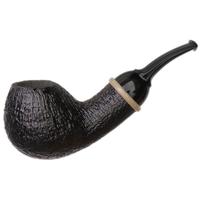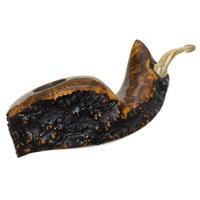Hi folks...again I have a couple of noobie style repair/maintenance questions. Lately I picked up a cheap estate lot of a handful of pipes from a well known auction site. All seem to be usable ultimately, which is good. I can sort the bowls out, but the three stem questions I'm agonising over are:
1) What's the best home method of cleaning out the years of dried crud in some cases blocking the stems? They look to my eyes to be black hard rubber stems.
2) All the BHR stems are faded...some to the point of being almost off-white. Can these be re-blackened? In the fountain pen world (another hobby!) there are products usued to pain on to old BHR pens. Are similar things used in the pipe world?
3) What's the best way, assuming I've completed the above two tasks, of polishing up and maintaining the stems going forward?
I have already carefully soaked a couple in a mix of soap and washing up liquid, and given them a tentative blast in an ultrasonic cleaner. I've mostly got the outside clean of residue and tar build up...but the insides are still leaving a bit to be desired.
Edit: Corrected capitalization in title per Rule #9. L.
1) What's the best home method of cleaning out the years of dried crud in some cases blocking the stems? They look to my eyes to be black hard rubber stems.
2) All the BHR stems are faded...some to the point of being almost off-white. Can these be re-blackened? In the fountain pen world (another hobby!) there are products usued to pain on to old BHR pens. Are similar things used in the pipe world?
3) What's the best way, assuming I've completed the above two tasks, of polishing up and maintaining the stems going forward?
I have already carefully soaked a couple in a mix of soap and washing up liquid, and given them a tentative blast in an ultrasonic cleaner. I've mostly got the outside clean of residue and tar build up...but the insides are still leaving a bit to be desired.
Edit: Corrected capitalization in title per Rule #9. L.












